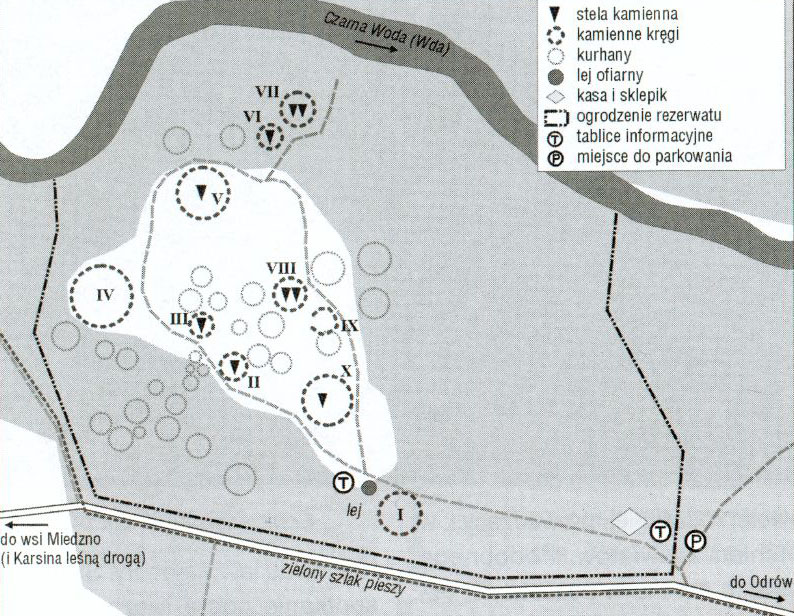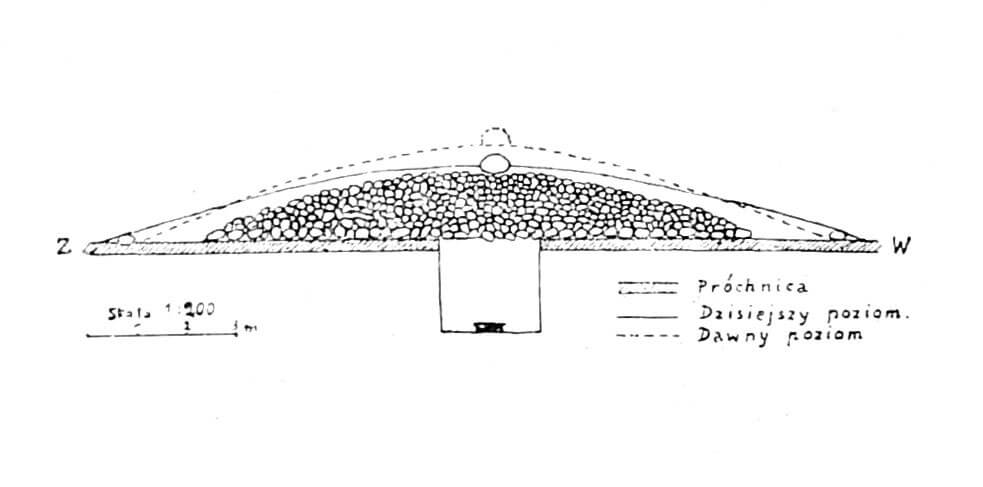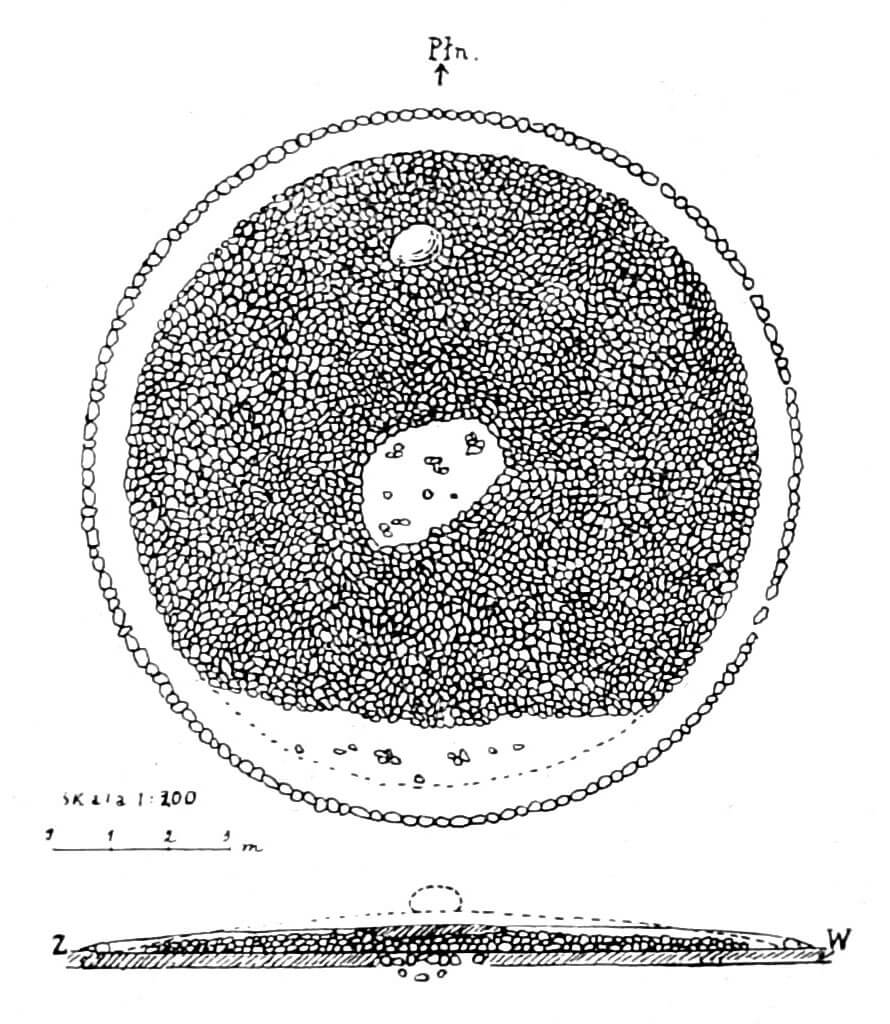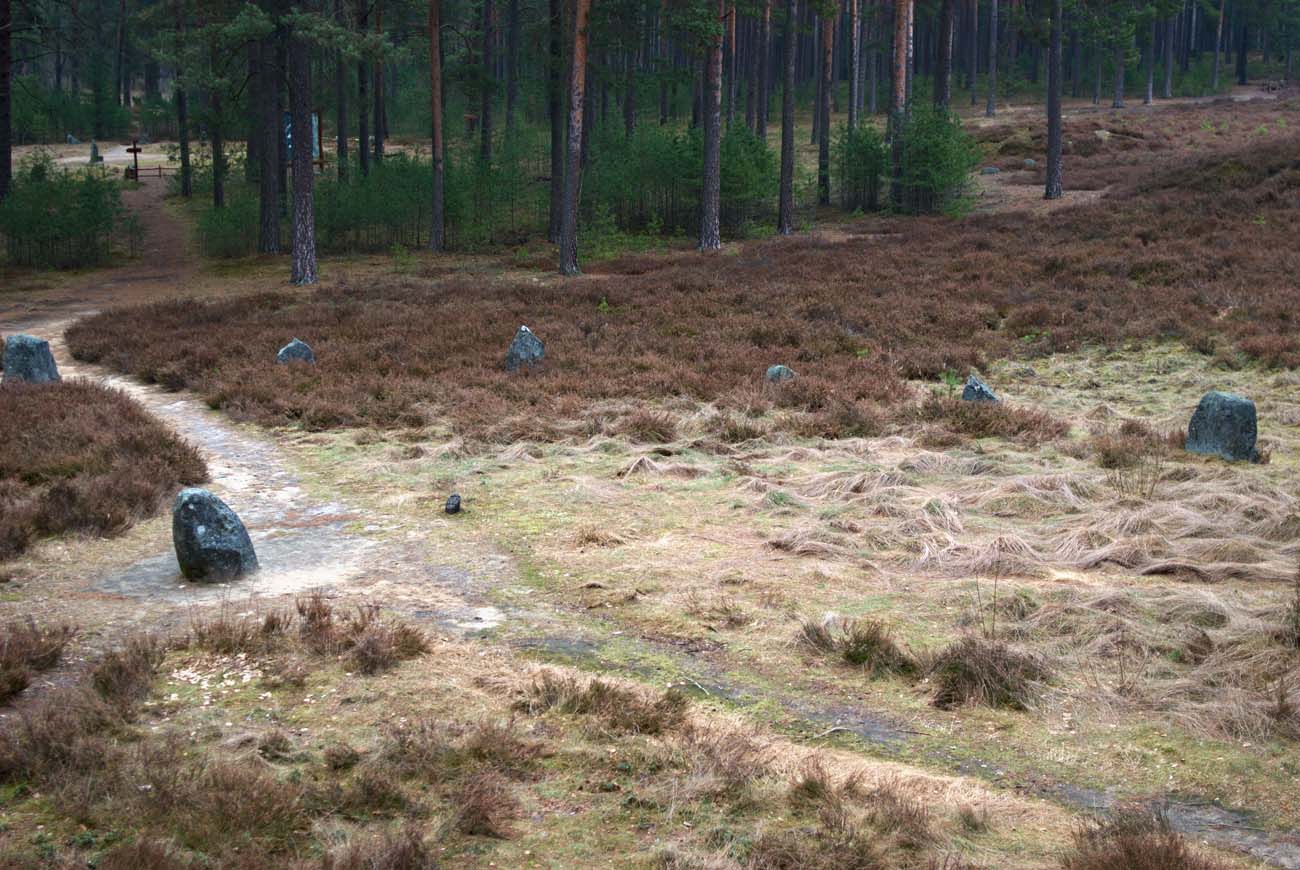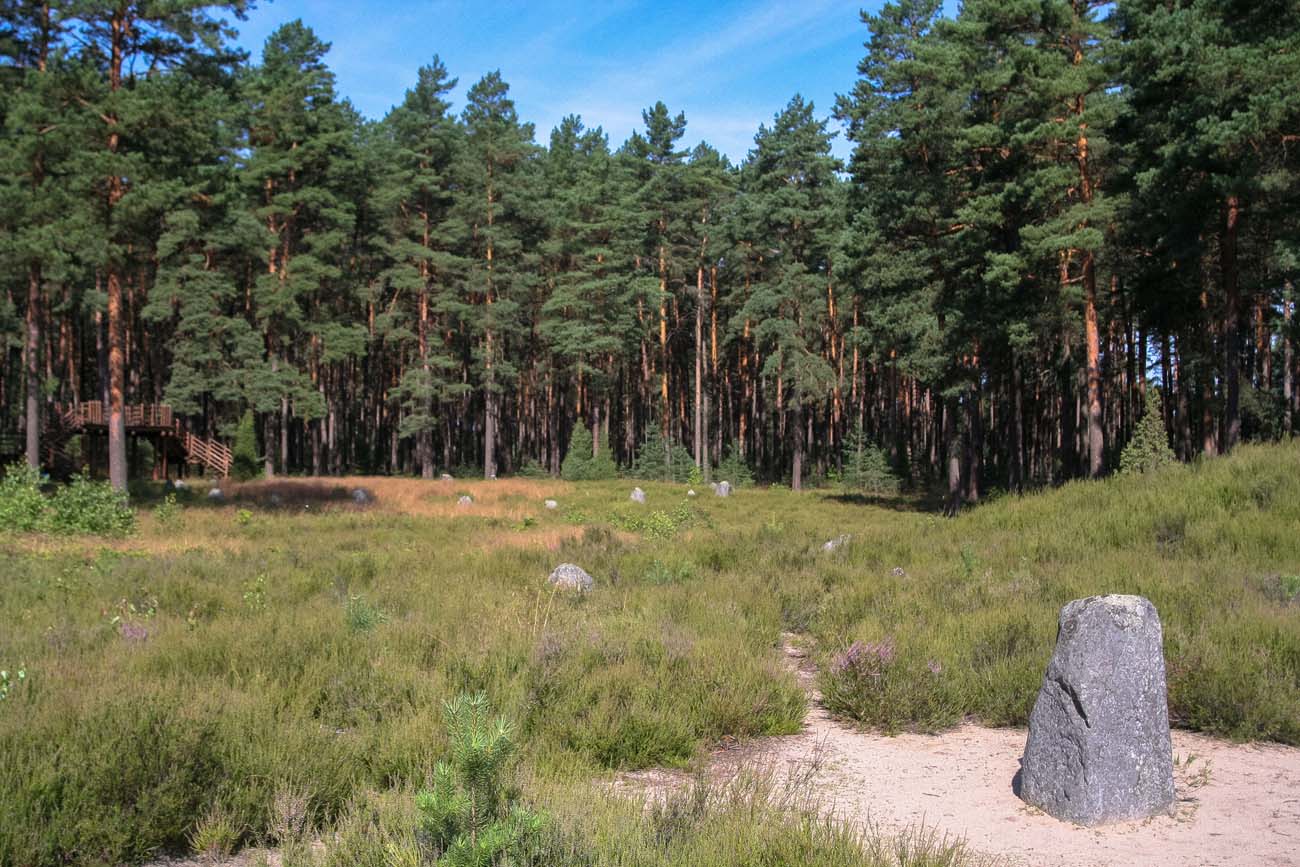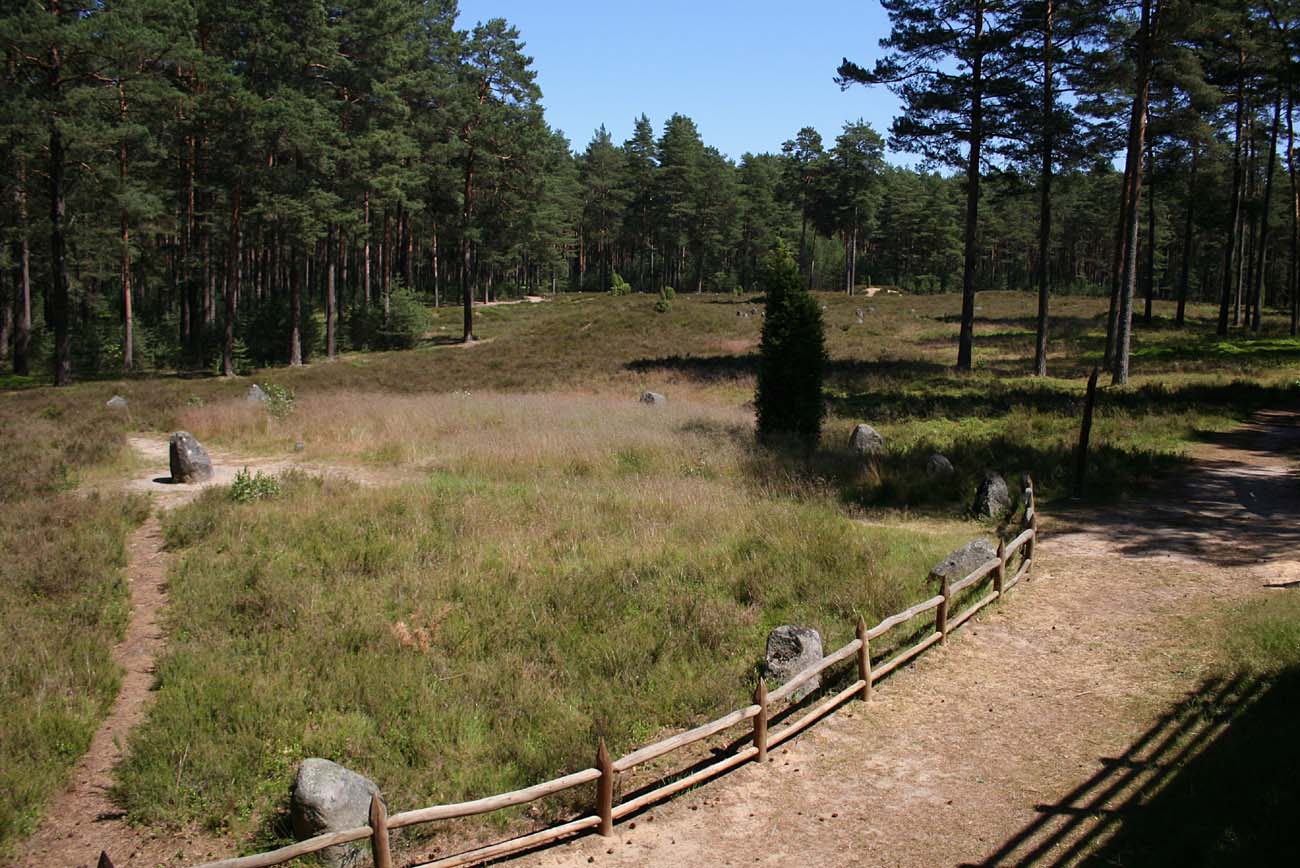History
The cemetery in Odry was a place where ancestral and tribal getherings were convened, the so-called things, and it was a place of bury of the deceased Goth population, who settled here around 70/80 AD, after arriving from Scandinavia. In Poland, they created the so-called Wielbark culture. They were to come to Pomerania under the leadership of the leader (known as the king) Berig. Further on, during the fifth king, Filimer, around 200, they left Pomerania and continued their journey south. They moved through Mazovia, the eastern part of Małopolska, Podlasie and Volhynia to Ukraine and as far as Romania. There, under Ermanaric, they formed a strong tribal union that threatened the neighboring Roman provinces.
Stone circles were a specific manifestation of the social life of the North Germanic population. It were cult structures which, despite the presence of a cemetery in the area, did not only play the role of a necropolis. It is believed that the circles were places of tribal and ancestral assemblies, the so-called things, and probably also places where rituals and sacrifices were performed. During these celebrations, public affairs were intertwined with magical procedures. Perhaps fortune-tellings were carried out and decisions were made with the help of sacrifices. The vicinity of the burials of deceased ancestors could create the atmosphere of a peace, necessary when taking up disputes. The neighborhood of the circles with the cemetery was a guarantee of seriousness, limited the will to draw the swords and called to consent.
According to tradition, Scandinavian things, or tribal assembly, were held in the open air, in circularly fenced places. With the consent of the gathered, resolutions were adopted, disputed cases were examined, and courts were held. In the first centuries of our era, the things were called twice a year: in late spring and late autumn, that is, at times similar to summer and winter solstices. Cattle, food and drink were sacrificed on the things, and human sacrifices were made during the main things.
Architecture
Situated on the southern side of the Wda River, the necropolis consisted of 12 stone circles and about 30 barrows with a diameter of 8-12 meters. Among the circles, the smallest was 15 meters in diameter and the largest 33 meters. Each consisted of a sandy or cobbled ring surrounded by boulders. The circles were made of specially placed stones protruding from 20 to 70 cm above the ground. There were 16 to 29 of them in one circle, most of them weighed about one ton. These were erratic stones from 1.5 to 2 meters high, which were subjected to certain tooling after they had been collected. Each boulder was shaped like an obelisk with a squat base, and one of the wider sides was made flat and smooth, so that its oval face pointed towards the inside of the circle. The boulders were dug up to a depth of no more than half a meter. In some circles, they were surrounded by small stones at the base.
The well-researched circle No. II had a diameter of about 16 meters and originally consisted of 19 large boulders. Between them there were smaller stones, connecting them with each other in such a way that the inner mound of the circle was surrounded by a compact row of large and small stones. The mound was relatively low (about 40-50 cm), built in the center of three layers of stones, and further towards the perimeter of two and one layer at the edge. The distance of the circle from the mound ranged between 25 and 40 cm. Near the center of the moundthere was a single, elongated boulder, probably originally a stele. Halfway from the perimeter, on the south-west side, there was a pit tomb with a skeleton with the head facing south.
Current state
The cemetery covers 16.91 hectares in the Kamienne Kręgi nature reserve. Next to Grzybnica, it is the largest and most famous complex of barrows and stone circles in Poland. To this day, 10 entire and 2 partially stone circles have survived, as well as about 30 mounds and 500 cremation burials. The vastness of the entire cemetery is clearly visible from the viewing platform which can be entered in the western part of the park. In addition, in the nearby Regional Hall in the village of Odry, you can see an archaeological and natural exhibition presenting, inter alia, finds from necropolis and a collection of rare lichens.
bibliography:
Breske A., Ellwart J., Kamienne kręgi Gotów, Gdynia 2018.
Kostrzewski J., Kurhany i kręgi kamienne w Odrach, w pow. Chojnickim na Pomorzu, Poznań 1928.

